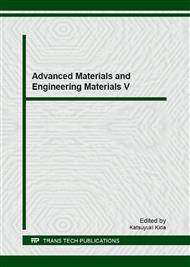p.3
p.11
p.17
p.22
p.27
p.34
p.39
p.44
p.49
Steel Tube Bending with a Filling Medium of Fiber-Reinforced Ice (FRI)
Abstract:
This paper proposes a new filling material, fiber-reinforced ice (FRI), for tube bending. In tube bending, lead and low temperature melting alloys have conventionally been utilized as the filling medium to prevent defects and to alleviate flattening of the tube’s cross section. However, these alloys are usually harmful to the environment (e.g., Pb, Bi-Pb-Sn-In, or Pb-Cd system alloys) or are expensive (e.g., In-Sn system alloys). In this study, the author utilized ice reinforced with the fiber of wastepaper for 3-point bending of JIS G 3452 SGP 32A steel tubes. Compression tests were conducted to analyze whether these tubes have crushing strength comparable to that of conventional fillings and sufficient ductility in low-speed deformation. The filling medium with more fiber effectively yielded less flattening.
Info:
Periodical:
Pages:
11-16
Citation:
Online since:
August 2016
Authors:
Price:
Сopyright:
© 2016 Trans Tech Publications Ltd. All Rights Reserved
Share:
Citation:


